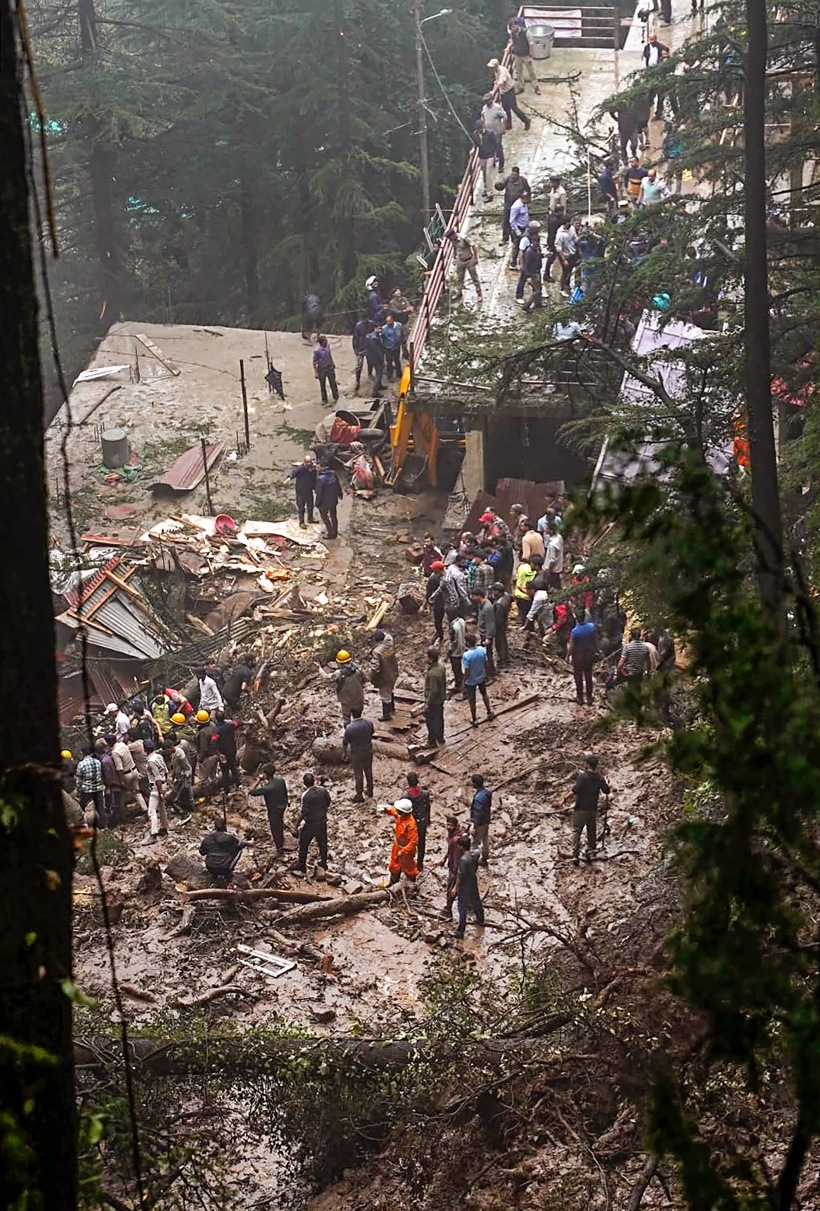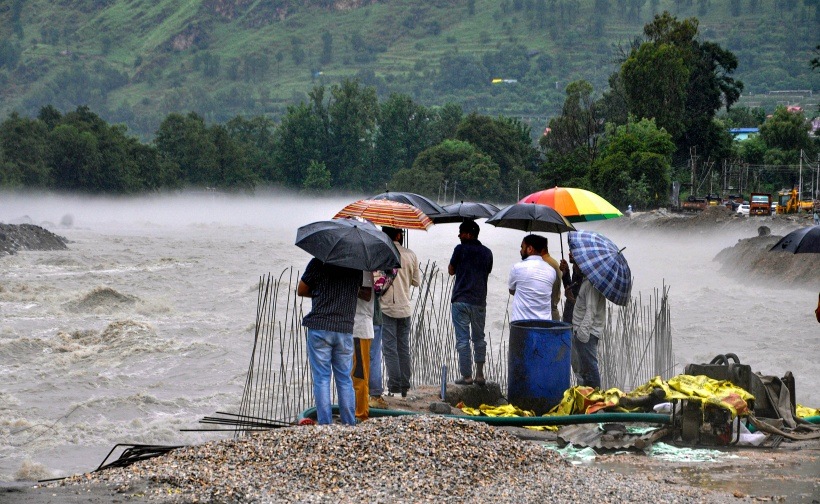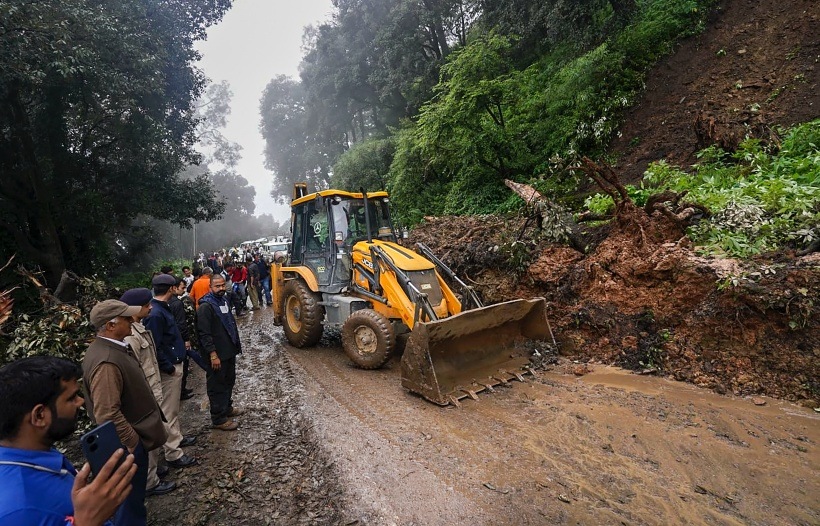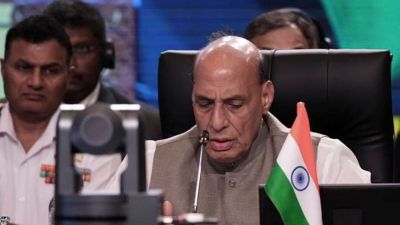As landslides hit IIAS complex, a look back at its tryst with unstable rocks and land
The Indian Institute of Advanced Study (IIAS) is housed in the former Viceregal Lodge, built in 1888 as a residence for British Viceroys. Archival records show that even back then, architects had to deal with unstable rocks and land.
 Soon after the construction of the new lodge finished in September 1888, retaining walls on certain roads on the grounds failed. (Express file photo)
Soon after the construction of the new lodge finished in September 1888, retaining walls on certain roads on the grounds failed. (Express file photo) The Indian Institute of Advanced Study (IIAS), Shimla, has sounded an alarm after the recent landslides in the region affected the front and rear portions of the complex. Heavy rains have lashed Himachal Pradesh since Sunday, triggering landslides in several places, including three in Shimla, killing at least 77 people.
The IIAS is housed in the former Viceregal Lodge which had been constructed in 1888 as a residence for the British Viceroys to India. Archival records show that even at that time, architects and construction engineers had to deal with unstable rocks and land.
When was the Viceregal Lodge built?
The work for construction of a new Viceregal Lodge in Shimla commenced in October 1885 and the building and estate were occupied in July 1888. Minor works were, however, carried out around the house and the ground up to September 30 that year, and the entire project was completed within just three years.
The site of the Viceregal Lodge in Shimla is called Observatory Hill and the top of this hill had to be flattened for the lodge to come up. Lord Dufferin was the Viceroy of India when the construction began and he occupied the lodge with his family in July 1888, as mentioned in records in the national archives. The lodge offers commanding views of the snow-clad mountains on one side and the winding Sutlej river on the other.
The amount sanctioned for the entire project at the time was Rs 12.19 lakh, and on completion the actual expenditure stood at Rs 13.12 lakh.
How stable were the grounds on which the Viceregal Lodge stood at the time?
Soon after the construction of the new lodge finished in September 1888, retaining walls on certain roads on the grounds failed. A report sent by the Public Works Department of the Government of India to the Secretary of State for India in September 1888 states, “During the present rainy season some of the old retaining walls on certain roads on the Observatory Hill have failed. The ground behind them has slipped, and it is necessary to rebuild the walls. This work cannot be carried out before the winter. The estimated cost of making the defects good is about Rs 184,500, and we propose to sanction the estimates in ordinary course, the expenditure not being, we consider, a fair charge against the estimate for the Viceregal Lodge, as the roads are not new ones and would in any case have had to be maintained.”
What problems were faced in constructing the lodge atop a hill?
The archives mention that great care had to be taken with the foundations of the Viceregal Lodge, as they were very irregular, the site being to the north a precipice and to the west clay, on the extreme edge of the plateau. The remainder was on rock, the top of the hill having been cut down to form a plateau.
The records mention that the rock found here was crushed shale, being fissured and cracked in every direction. “Concrete with a very great spread and in considerable thickness was used to form the footings of the foundations and on which to form the superstructure, and the greatest possible weight allowed in any case was 2 tons to the foot; nearly everywhere the weights do not exceed 11 tons. Doubtless these large allowances account for the absence of foundation settlement,” the records state.
From where was the building material sourced?
The materials used were principally supplied from local sources. The records show the walling stone was quarried within five miles of the site and transported on mules, the cut-stone from Kalka, 50 miles away at the foot of the hills. The lime was burnt at Kasumpti and Jutogh, near Shimla, and the bricks and tiles were manufactured at Jutogh.
The timber for the most part was obtained from forests in the surrounding hills and comprised deodar, kail, walnut and oak. The Burma teak wood used in the joinery and in the main stairs and the floors of the State rooms was purchased six or seven years before the works commenced. The ironwork i.e., girders, beams, trusses, was supplied from Bombay.
Were Indians involved in overseeing the project?
While the officers who carried out the supervision of the construction were all British, records show several “native mistries” and sub-overseers were also employed. Detailed drawings were supplied to them for every bit of work, and in many cases models were made as well.
All labour, stone cutters and carpenters were also locally employed and higher wages had to be offered to them to make them stay and work in winters.
















